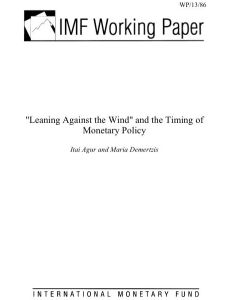Join getAbstract to access the summary!

Join getAbstract to access the summary!
Itai Agur and Maria Demertzis
“Leaning Against the Wind” and the Timing of Monetary Policy
IMF, 2013
What's inside?
A short but sharp interest rate cut may be the best response to shocks.
Recommendation
As 2008 began, leverage ratios at many banks were north of 40 to 1, but financial engineering had dispersed risk, and risk models were giving executives minute-by-minute readings on the health of their institutions. Just nine months later, it was all in ruins. Banks have an interest in taking on more risk than may be prudent for society at large, and persistently low interest rates tilt the risk/reward equation dramatically. Central banks responding to economic shocks tend to be cautious when raising rates as an economy improves, thereby helping to drive bubbles. In this technical paper, economists Itai Agur and Maria Demertzis propose that central banks consider a new approach to financial stability. getAbstract suggests their innovative work to financial policy makers and to central and commercial bankers.
Summary
About the Authors
Itai Agur is an economist at the IMF’s Singapore Regional Training Institute. Maria Demertzis, an economist at De Nederlandsche Bank, is on secondment to the European Commission.























Comment on this summary